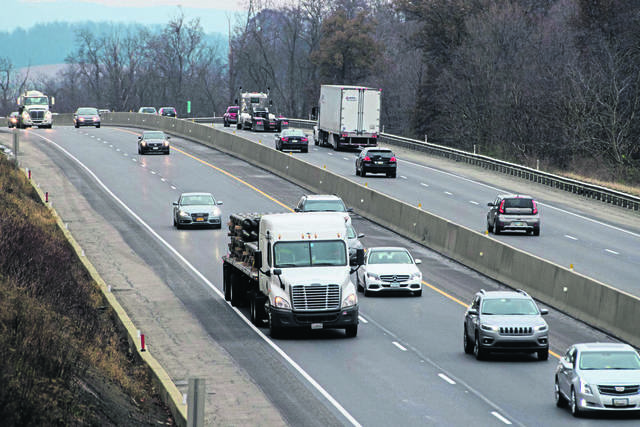Mark Compton: Safety drives every decision at turnpike commission
Despite the best efforts of the transportation industry nationally working together to reduce fatal and serious-injury crashes, nearly 40,000 people die each year in highway-related incidents; on average, 15 of those occur on the Pennsylvania Turnpike. Every year, dozens of roadway workers, first responders and tow-truck operators are killed; we have felt the loss of 45 employees since opening in 1940.
At the Pennsylvania Turnpike Commission (PTC), the safety of customers, employees and business partners is something we weave into every part of our decision-making process. In fact, more than 85% of the PTC’s $500 million capital plan reflects a direct focus on safety and mobility. The remaining 15% makes up our fleet, buildings and IT infrastructure necessary to make the most of that investment.
Data show that we are making progress. The turnpike’s rate of fatalities is 0.22 per 100 million vehicle miles traveled compared to the national average for interstates, which is 0.53. Our injury rates are similarly lower. To further reduce these numbers, we embarked upon several small- and large-scale changes designed to improve safety.
Much of the turnpike system was designed in the 1930s and as such did not benefit from improvements in design and construction techniques that have had positive benefits on newer highways. So, we began a series of projects to reconstruct the roadway and mitigate many of the challenges that our place in history presented us with. In this process, the roadway is reconstructed from edge to edge, curves are changed, shoulders are widened and pavement is smoother with better grip. In some cases, additional lanes are added. To date, 145 miles of the turnpike have been rebuilt.
We have made changes behind the scenes in how we operate that are having impressive results as well.
In 2012, we made dramatic improvements to our Traffic Operations Center with a goal of increasing our operational awareness across our 552-mile system; and while even today we cannot see every mile of roadway, we have tools to provide better situational awareness than we have at any point in history.
As technology develops that allows us to pinpoint the location of trouble, we are utilizing nationally recognized ways to begin responding to incidents more quickly — sometimes before a call even comes in. A combination of new tools working together is helping us to use vehicular speed and weather data, crowd sourcing, mobile camera systems, smartphone apps and other technologies to clear incidents sooner, shortening incident-clearance time by an average of 20 minutes and reducing risks of secondary crashes. The PTC has also been engaged in emerging technologies of connected and autonomous vehicles to ensure we are ready to take advantage of the promise they bring to reducing crashes.
We worked extensively to improve the look and length of our work zones as well as modifications to signage, improving visibility and minimizing exposure for workers. Earlier this month, along with PennDOT, we launched a new automated work zone speed enforcement program that sends speeding drivers a fine for failing to obey work zones speed limits.
On a larger scale, the entire Pennsylvania highway responder community came together to better coordinate and train response partners on the best practices in safe, quick highway clearance — understanding that the less time spent with closed lanes of travel means less risk for firefighters, EMS, state police and others. This project has resulted in training delivered to nearly 12,000 highway responders.
Safety is not a slogan or a shiny object to us, but rather an ingrained and practiced value. A value that nearly all our employees, when recently surveyed, agreed was most important for us to invest in. A value that we believe begins with our actions and improvements but that cannot be fully realized without the help of all who travel on our roadways.
To those who say we need safer roadways, we agree. But we will need cooperation from decision-makers behind the wheel to achieve the only goal that matters: zero fatalities.
Mark Compton is CEO of the Pennsylvania Turnpike Commission.
Remove the ads from your TribLIVE reading experience but still support the journalists who create the content with TribLIVE Ad-Free.

